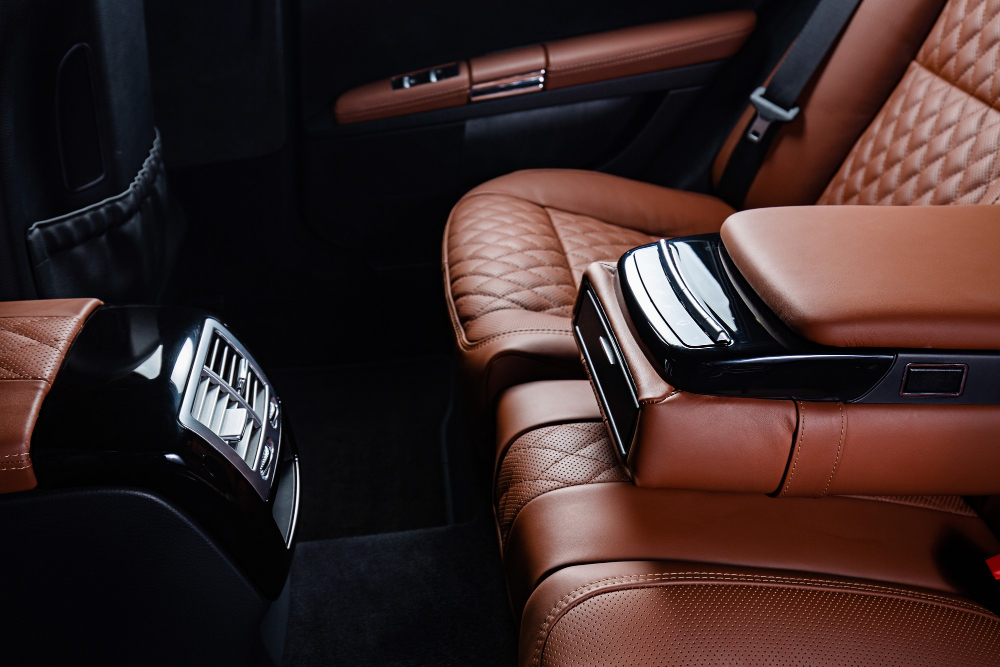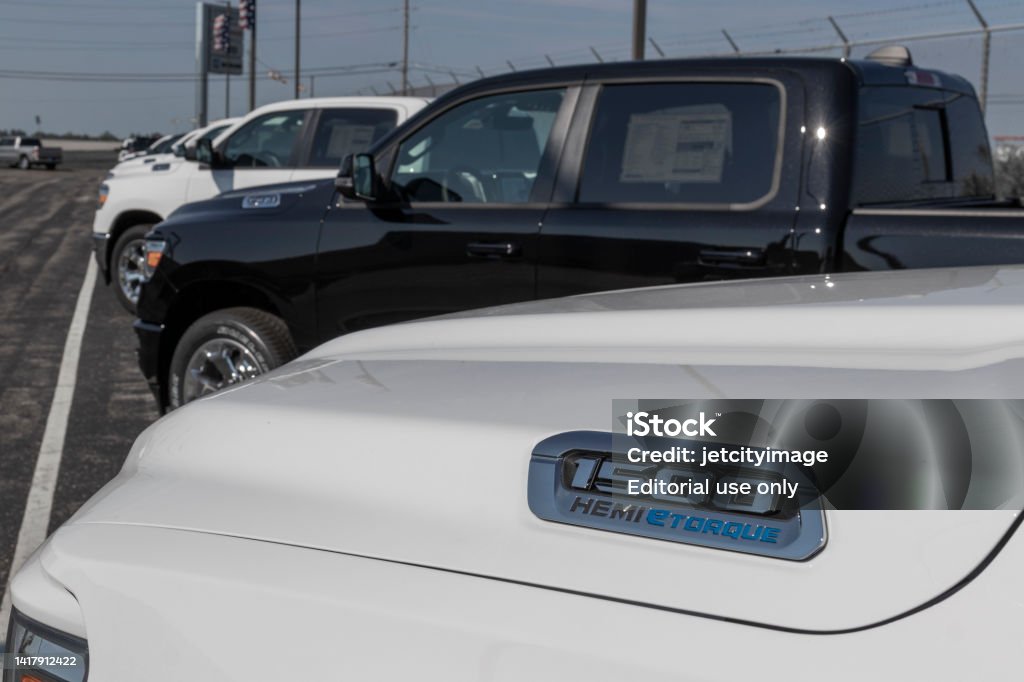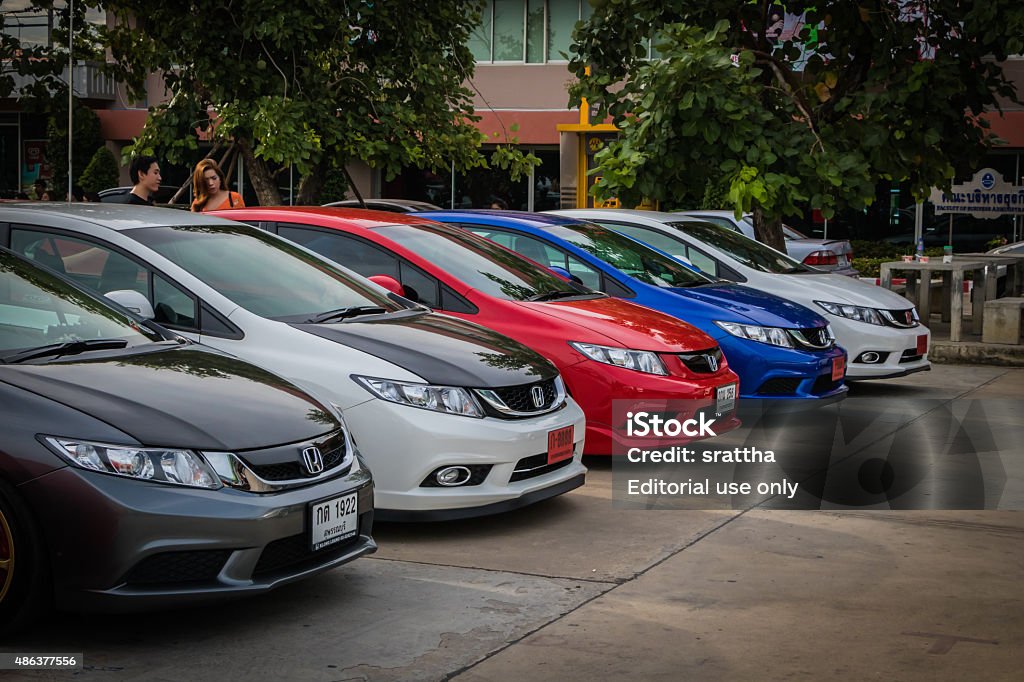Business
Car Interior Materials Used in Toyota Vehicles

When it comes to purchasing a new car, one of the most important considerations is the quality and feel of the interior. Toyota vehicles, known for their dependability and cutting-edge technology, also boast exceptional interiors that provide comfort, style, and durability. Whether you’re exploring the options at a Toyota Oklahoma dealership or browsing online, it’s clear that Toyota has invested heavily in the materials used to create an environment that’s both functional and inviting. In this guide, we’ll explore the different car interior materials used in Toyota vehicles in 2025, from upholstery fabrics to dashboard components, and why these choices enhance the overall driving experience.
Types of Upholstery Materials in Toyota Vehicles
One of the first aspects that drivers notice when they sit in a car is the upholstery. Toyota offers a variety of materials to suit different preferences, needs, and price ranges. Each upholstery type is designed with durability, comfort, and aesthetics in mind.
Fabric Upholstery
Fabric upholstery is a common option in Toyota’s more affordable models, offering a soft, breathable surface that’s comfortable for daily use. The fabric is often made from high-quality polyester or blended fibers, providing durability while maintaining a comfortable feel. Toyota uses specialized fabric treatments to improve resistance to stains and wear, ensuring the interior remains looking fresh for a long time.
Benefits of Fabric Upholstery:
- Breathability: Fabric offers excellent air circulation, preventing overheating during long drives or hot weather.
- Cost-Effective: Fabric is typically more affordable than leather and is a standard feature in lower- and mid-range Toyota vehicles.
- Variety of Textures and Colors: Toyota offers fabric in various colors and patterns, allowing buyers to choose a look that suits their personal style.
Leather Upholstery
Leather upholstery is often found in Toyota’s higher-end models, such as the Highlander, Avalon, or the luxurious trims of the Camry. Known for its sophisticated look and premium feel, leather provides a sleek and polished appearance to the vehicle’s interior.
Benefits of Leather Upholstery:
- Luxury and Comfort: Leather seats offer a high-end feel, adding to the overall elegance of the car’s interior. The material is also smooth, which can enhance comfort on longer journeys.
- Durability: Leather is strong and can withstand years of use without showing significant signs of wear. With proper care, leather upholstery can last much longer than fabric.
- Easy to Clean: Leather is easier to wipe down and clean compared to fabric, making it a popular choice for families or individuals who want an easy-to-maintain interior.
In addition to its visual appeal, leather upholstery also contributes to a quieter, more comfortable cabin due to its sound-dampening properties.
SofTex Synthetic Leather
In an effort to offer a more eco-friendly alternative, Toyota uses SofTex, a synthetic leather material, in many of its vehicles, including the Toyota Prius and the RAV4. SofTex is made from a polyurethane-based material that mimics the appearance and feel of leather but is lighter, more durable, and easier to clean.
Benefits of SofTex Upholstery:
- Eco-Friendly: SofTex is made using fewer resources than traditional leather and has a lower environmental impact. It is also free from harmful chemicals like PVC.
- Lightweight and Durable: SofTex is lighter than leather, which can improve fuel efficiency. It is also more resistant to scratches and fading.
- Comfort: SofTex retains a soft, leather-like feel and maintains comfort even on long drives. It is temperature-regulating, helping the seats remain cool in hot weather and warm in colder conditions.
SofTex is an excellent choice for drivers looking for a balance between comfort, sustainability, and affordability.
Dashboard and Trim Materials
The dashboard and trim materials in Toyota vehicles are not just visually appealing but also designed to be functional and durable. These materials play a crucial role in the overall aesthetic and driving experience, contributing to a quiet cabin and a high-quality feel.
Soft-Touch Plastics
Toyota uses soft-touch plastics extensively throughout the interiors of many of its models, especially in higher trim levels. These materials give the dashboard and door panels a premium feel, as they are smooth to the touch and resistant to scratches. Soft-touch plastics are often found in combination with other materials like leather or aluminum accents.
Benefits of Soft-Touch Plastics:
- Premium Feel: Soft-touch materials offer a high-end experience while maintaining the functionality of plastic.
- Noise Dampening: These plastics help absorb sound, contributing to a quieter and more serene cabin environment.
- Durability: Soft-touch plastics are resistant to scratches and fading, making them ideal for long-term use.
The combination of soft-touch plastics with other premium materials enhances the overall perception of the vehicle’s interior.
Aluminum and Chrome Accents
In Toyota’s more luxurious models and higher trims, you’ll find aluminum and chrome accents on the dashboard, door handles, and even the gear shift. These materials are used to add a touch of sophistication and luxury while complementing other interior elements.
Benefits of Aluminum and Chrome Accents:
- Modern and Sleek Look: These metals offer a clean, shiny appearance that is often associated with premium vehicles.
- Durability: Aluminum and chrome are highly durable, resisting scratches and fading over time.
- Enhanced Aesthetic: The metallic finish creates a visually appealing contrast with other materials, helping to elevate the overall interior design.
These accents are often integrated seamlessly into the design, adding to the vehicle’s upscale appeal without overpowering the rest of the interior.
Floor and Cargo Materials
The floor materials in a Toyota vehicle are often overlooked but play an essential role in both aesthetics and practicality. The material used in the cargo area, floor mats, and carpeting can significantly affect the ease of maintenance and the vehicle’s overall durability.
Carpet and Floor Mats
Most Toyota vehicles come equipped with carpeted floors and floor mats. These mats are designed to protect the carpeting from dirt and debris, while the carpets themselves are made from durable fibers that can handle everyday wear and tear.
Benefits of Carpet and Floor Mats:
- Comfort and Insulation: Carpet adds comfort by providing a cushioned feel underfoot. It also helps with insulation, keeping the cabin quieter.
- Customizable: Many Toyota owners opt for custom floor mats or all-weather mats for added protection.
- Easy Maintenance: Carpet mats are easy to clean and vacuum, keeping the interior looking tidy.
All-Weather Floor Mats
For those in regions with harsh weather conditions, Toyota offers all-weather floor mats made from rubber or durable synthetic materials. These mats are designed to protect the interior from mud, snow, and rain, keeping the cabin clean and dry.
Benefits of All-Weather Floor Mats:
- Durability: Made from thick, waterproof materials, all-weather mats are built to last and withstand heavy usage.
- Protection: They provide an additional layer of protection for the vehicle’s interior, preventing stains and dirt buildup.
- Easy Cleaning: These mats can be easily removed and hosed down, making them a convenient option for drivers in climates with unpredictable weather.
Advanced Materials for Eco-Friendly Toyota Models
As part of its commitment to sustainability, Toyota has introduced advanced materials in some of its eco-friendly models, like the Prius and the Mirai. These materials are designed to reduce the car’s carbon footprint while maintaining performance and comfort.
Bio-Based Fabrics
Bio-based fabrics made from natural fibers like hemp, cotton, and bamboo are used in certain Toyota vehicles. These materials are lightweight, biodegradable, and produced with a smaller environmental footprint than traditional synthetics.
Benefits of Bio-Based Fabrics:
- Sustainability: These fabrics are more environmentally friendly, reducing the need for petroleum-based resources.
- Lightweight and Durable: They are both lightweight and durable, making them ideal for eco-friendly vehicles like the Prius.
- Comfort: Bio-based fabrics provide a natural feel and are often soft to the touch.
These eco-friendly materials align with Toyota’s vision for a more sustainable automotive future.
Conclusion
The interior materials used in Toyota vehicles play a pivotal role in creating a comfortable, stylish, and durable environment for drivers and passengers. Whether it’s the plush leather upholstery in high-end models or the advanced, eco-friendly fabrics in hybrid and electric vehicles, Toyota has carefully selected materials that cater to various tastes and needs. For those in Oklahoma considering a Toyota, comfort, and sustainability. With their attention to detail and commitment to quality, Toyota ensures that every ride is enjoyable, safe, and environmentally conscious.
Business
RAM 1500 Leasing vs Buying: Which Is Better In turlock?

The RAM 1500 is one of America’s most popular full-size pickup trucks, known for its strength, refinement, and advanced features. Whether you’re using it for hauling heavy loads, towing equipment, or cruising through the Central Valley with comfort and style, the RAM 1500 is a versatile option. If you’re in the market for a new truck in California, particularly in the Central Valley area, you’re likely weighing the benefits of leasing versus buying. This decision can impact your monthly budget, how long you keep your vehicle, and what kind of financial flexibility you’ll have in the years to come. Thankfully, Turlock dealerships offer a variety of options for both leasing and financing a RAM 1500. But which choice is right for you? Let’s compare both options based on key considerations to help you make an informed decision in Turlock.
Initial Costs and Monthly Payments
One of the most noticeable differences between leasing and buying is the upfront and monthly cost structure. When you lease a RAM 1500, you’re typically required to pay less money upfront. This includes a lower down payment, sometimes just the first month’s payment and a few fees, making it more accessible for those who want to drive a new truck without the large financial commitment.
Monthly payments for leases are generally lower than finance payments because you’re only paying for the vehicle’s depreciation over the lease term, not the full value. On the other hand, purchasing a RAM 1500—whether through financing or paying outright—means higher monthly costs, but you’re working toward ownership. For Turlock drivers planning to stay within a set monthly budget, leasing may offer more financial breathing room.
Long-Term Value and Ownership
Buying a RAM 1500 allows you to own the vehicle outright after completing the loan term, which typically ranges from 48 to 72 months. Once paid off, you can enjoy years of payment-free driving. The truck becomes your asset, and you can customize it, sell it, or trade it in anytime you wish. Over the long run, purchasing tends to offer better value—especially if you keep your vehicles for many years.
Leasing, in contrast, is more like renting. At the end of the lease term—usually 24 to 36 months—you’ll return the vehicle unless you decide to buy it out. You won’t build equity in the truck, and you’ll need to start a new lease or purchase another vehicle. For Turlock residents who prefer to own their trucks long-term, buying is typically the smarter financial choice.
Mileage and Driving Habits
How much you drive each year can play a major role in whether leasing or buying is better for you. Most RAM 1500 lease agreements come with mileage limits—typically 10,000 to 15,000 miles per year. Exceeding this limit can lead to costly overage fees, which are often charged per mile.
Turlock and the surrounding Central Valley areas are home to agriculture, construction, and rural commuting. If you’re using your truck for long drives, frequent hauling, or job-site travel, buying might be a safer bet. There are no mileage penalties with ownership, and you can use the vehicle however you need without worrying about end-of-lease inspections.
Customization and Use Flexibility
Another area where buying a RAM 1500 has the upper hand is customization. If you want to lift your truck, upgrade the suspension, add off-road gear, or change the exhaust system, owning the vehicle gives you full control. Custom mods are common among truck owners in Turlock who use their vehicles for work, off-roading in the Sierra foothills, or just expressing personal style.
Leasing contracts typically require the truck to be returned in its original condition. Modifications can result in penalties or the need to reverse changes at your own cost before the lease ends. If personalizing your RAM 1500 is important to you, buying offers the freedom you need.
Maintenance Responsibilities
Maintenance is an often-overlooked factor when comparing leasing and buying. When leasing a RAM 1500, you’re typically covered by the factory warranty for the duration of the lease, which helps minimize out-of-pocket expenses. Leases usually last 2 to 3 years, aligning well with the warranty period, so you won’t have to worry about major repairs.
When you buy, however, you’re responsible for all maintenance once the warranty expires. RAM offers extended warranties and service plans, but the costs of ownership maintenance—such as tires, brakes, and oil changes—can add up over time. For Turlock drivers who want minimal maintenance responsibilities, leasing may provide peace of mind and predictable costs.
Vehicle Upgrades and Tech Features
RAM consistently updates the 1500 lineup with the latest tech, safety, and performance features. If you like to drive the newest model every few years, leasing gives you that flexibility. At the end of each lease, you can simply switch into the latest version with improved infotainment, advanced driver-assist systems, or better fuel economy.
Buying a RAM 1500 is a longer-term commitment, which means you might be driving the same vehicle for 5 to 10 years. If staying current with new features is important to you—and you want to avoid the hassle of selling or trading in your truck—leasing makes it easy to upgrade frequently. Turlock drivers who appreciate cutting-edge technology may find leasing more aligned with their preferences.
Local Market and Incentives in Turlock
RAM often provides manufacturer incentives such as low APR financing, cash rebates, or lease loyalty bonuses that can make either option more appealing.
It’s important to speak with local dealership experts to see what kind of deals are available for both leasing and buying. Sometimes, a promotional lease can offer better short-term value than a purchase, especially if you don’t plan to keep the truck for long. Conversely, dealer financing incentives may make ownership more accessible than you expect. Staying informed about local offers will help you take full advantage of what’s available in Turlock.
Conclusion
There’s no one-size-fits-all answer to whether leasing or buying a RAM 1500 is the better choice—it ultimately depends on your budget, driving habits, long-term goals, and personal preferences. Leasing is ideal for those who want lower monthly payments, predictable maintenance, and the freedom to upgrade to a new model every few years. Buying, on the other hand, is better suited for drivers who value ownership, plan to customize their truck, or rack up high mileage over time.
Whether you’re a business owner needing a reliable workhorse or a weekend warrior looking for power and performance, the RAM 1500 delivers across the board. Take your time, explore the current incentives, and weigh these key factors to make the decision that’s best for your lifestyle and financial goals.
Business
Different Car Mods That Enhance Honda Performance Honda Performance

Car modifications have long been a popular way for automotive enthusiasts to boost performance, personalize their ride, and make a statement on the road. For Honda owners in particular, modifying a vehicle is not just about looks—it’s about enhancing power, handling, efficiency, and overall driving experience. Hondas are known for their reliability and performance potential, making them one of the most mod-friendly vehicle brands on the market. Whether you’re working with a Civic, Accord, or a sportier model like the Type R, there is a wide variety of modifications available to elevate your vehicle’s capabilities. If you’re looking to explore performance upgrades or need expert advice, visiting a Honda Dealer in Christiansburg, Virginia, is a great place to begin your journey into performance modifications. In this guide, we’ll explore different car mods that can take your Honda’s performance to the next level.
Engine Performance Upgrades
Upgrading your Honda’s engine components is one of the most effective ways to enhance performance. These modifications can significantly improve horsepower, torque, throttle response, and overall engine efficiency.
Cold Air Intakes
Installing a cold air intake is one of the most accessible and cost-effective ways to boost performance. A cold air intake replaces the restrictive factory air box, allowing your engine to draw in cooler, denser air. This results in better combustion and improved horsepower. Honda engines are particularly responsive to this modification, making it a favorite among tuners.
Performance Exhaust Systems
A performance exhaust system enhances airflow out of the engine, reducing back pressure and allowing the engine to “breathe” more efficiently. This not only increases horsepower and torque but also gives your Honda a more aggressive exhaust note. Cat-back and axle-back exhaust systems are popular choices that offer performance gains without requiring major engine work.
ECU Tuning
Electronic Control Unit (ECU) tuning or re-mapping involves adjusting the software that controls engine performance. This can result in improved throttle response, better fuel efficiency, and more power. Tuners can tailor the ECU to complement other modifications, such as intakes and exhaust systems, ensuring optimal performance across the board.
Suspension and Handling Enhancements
While increasing speed and power is thrilling, it’s equally important to ensure your Honda handles well. Upgrading the suspension system can dramatically improve cornering ability, ride quality, and overall control.
Coilovers
Coilover suspension systems allow for adjustable ride height and damping, giving you greater control over your Honda’s stance and performance. Whether you’re interested in a low street look or improved track performance, coilovers offer versatility and improved handling.
Sway Bars and Strut Braces
Upgraded sway bars (anti-roll bars) and strut tower braces help reduce body roll during aggressive cornering. These mods improve stability and make the car feel more planted, particularly in high-speed or performance driving scenarios.
Performance Bushings
Factory rubber bushings tend to wear out over time and can introduce sloppiness into the suspension system. Upgrading to polyurethane or solid bushings reduces flex and increases feedback, which is essential for spirited driving and track days.
Brake System Upgrades
When you increase power and handling capabilities, it’s essential to ensure your Honda can stop effectively. Brake upgrades are vital for safety and performance.
Performance Brake Pads and Rotors
Swapping out your stock brake pads for performance variants can significantly improve stopping power. Pairing these with slotted or drilled rotors can reduce brake fade under high-stress conditions, such as track driving or repeated hard braking.
Big Brake Kits
For serious performance enthusiasts, big brake kits offer enhanced clamping power and better heat dissipation. These kits typically include larger calipers, rotors, and high-performance pads. They’re a great investment if you’re upgrading your car for high-speed driving or racing.
Transmission and Drivetrain Modifications
Transmission and drivetrain upgrades help ensure that power from the engine is effectively transferred to the wheels.
Short Shifters
A short shifter reduces the distance the gear stick needs to travel between shifts. This can make shifting feel quicker and more precise, especially important in manual transmission Hondas like the Civic Si or Type R.
Upgraded Clutch Kits
When adding significant horsepower, the stock clutch may no longer handle the increased load efficiently. Performance clutches offer greater clamping force, allowing for more aggressive power delivery and quicker gear engagement.
Limited-Slip Differentials (LSD)
An LSD improves traction during acceleration and cornering, especially in front-wheel-drive models. This upgrade is particularly beneficial during track use or aggressive driving, helping to distribute power more evenly to the wheels.
Lightweight Components
Reducing weight is a proven method for improving vehicle performance, especially in terms of acceleration, handling, and braking.
Lightweight Wheels
Lighter wheels reduce unsprung mass, which can improve acceleration, cornering, and ride quality. Many performance wheels are made from aluminum alloy and come in a variety of sizes and styles to suit your needs.
Carbon Fiber Body Parts
While typically more expensive, carbon fiber parts such as hoods, trunks, and spoilers can shave significant weight off your vehicle. These not only improve performance but also add a high-end aesthetic to your Honda.
Lightweight Battery
Replacing the factory battery with a compact, lightweight variant can save up to 30 pounds or more, contributing to better weight distribution and marginal gains in performance.
Aerodynamic and Exterior Enhancements
While often associated with aesthetics, aerodynamic modifications can also provide real performance benefits by increasing downforce and reducing drag.
Front Splitters and Rear Diffusers
A front splitter reduces lift at the front of the car, helping it stay planted at higher speeds. A rear diffuser manages airflow underneath the car, enhancing stability and traction. Both are common upgrades for Honda models used in track or spirited driving environments.
Spoilers and Wings
While spoilers are often installed for appearance, well-designed units (especially adjustable wings) can contribute to downforce, improving grip and control at higher speeds.
Hood Vents and Heat Extractors
These modifications help reduce engine bay temperatures by venting hot air more efficiently. Keeping the engine cooler improves performance and extends component life.
Interior Performance Mods
Interior modifications can also contribute to your Honda’s performance and driving experience.
Performance Seats
Replacing factory seats with lightweight racing seats can reduce weight and provide better support during aggressive driving. Bucket seats with harness slots are especially useful for track days.
Steering Wheel Upgrades
A smaller, sportier steering wheel can provide better grip and quicker response, which enhances driver control. Many options also offer a more ergonomic feel for improved comfort.
Gauges and Displays
Installing performance gauges, such as air/fuel ratio meters, boost gauges, or oil temperature indicators, allows for better engine monitoring. These are particularly valuable when running aftermarket performance parts.
Legal and Insurance Considerations
Before diving into any modifications, it’s important to understand the legal and insurance implications. Some mods may not be street-legal in all states, and others may void your vehicle warranty. Additionally, insurance providers may require you to disclose certain upgrades, which could affect your premiums. Always research local regulations and check with your insurance provider before making major changes.
Conclusion
Enhancing your Honda’s performance through modifications can be an exciting and rewarding process. From engine and suspension upgrades to weight reduction and improved braking systems, the options are nearly endless. However, it’s essential to approach mods with a balance of performance, reliability, and legality. Whether you’re tuning your Civic for the street or prepping an Accord for weekend track days, each upgrade contributes to a more engaging and capable driving experience. For those just starting out or seeking professional guidance, aftermarket accessories, and expert advice tailored to your model and goals. By making smart, informed choices, you can transform your Honda into a machine that not only turns heads but performs like a dream on the road or track.
Business
Ford Safety Ratings in New Mexico

When it comes to choosing a vehicle, safety is a top priority for many drivers—and rightfully so. Whether you’re navigating the busy streets of Albuquerque, cruising through Santa Fe, or heading into the mountains, having a car that protects you and your passengers is essential. Ford vehicles have long been recognized for their safety features, consistently earning high marks in crash tests and evaluations. In New Mexico, where diverse terrains and weather conditions can present unique driving challenges, understanding how Ford models perform in safety ratings is crucial. Local buyers often turn to a trusted Ford dealership New Mexico for guidance on which models offer the best protection. This article explores Ford’s safety ratings in New Mexico, how they are determined, and what models stand out in terms of safety.
How Safety Ratings Are Determined
Before diving into specific Ford models, it’s important to understand how vehicle safety ratings are calculated. In the United States, two primary organizations are responsible for conducting safety tests:
- The National Highway Traffic Safety Administration (NHTSA): Provides a five-star rating system based on frontal, side, and rollover crash tests.
- The Insurance Institute for Highway Safety (IIHS): Uses more detailed testing categories, such as small overlap front crashes and roof strength, and assigns ratings from “Poor” to “Good,” with additional designations like “Top Safety Pick.”
These tests evaluate how a vehicle protects occupants during different types of collisions, how effective the safety systems are (such as airbags and seatbelts), and how well the car’s structure absorbs crash energy. These scores serve as a reliable benchmark when comparing vehicles across categories.
Top-Rated Ford Models in Safety
Ford offers a wide range of vehicles, from compact SUVs to full-size trucks, and many of them consistently perform well in crash safety ratings. In New Mexico, where road conditions vary from city driving to rural highways, the following Ford models stand out for their safety:
- Ford Escape: A favorite among families, the Ford Escape has earned high marks from both NHTSA and IIHS. It features advanced driver-assistance systems like blind-spot monitoring, lane-keeping assist, and automatic emergency braking.
- Ford F-150: Known for its durability and utility, the F-150 also excels in crash safety, especially when equipped with Ford’s Co-Pilot360 suite. The 2024 model received a five-star overall rating from NHTSA.
- Ford Explorer: Designed with family safety in mind, the Explorer offers strong crash test performance and optional safety tech such as reverse brake assist and post-collision braking.
- Ford Mustang Mach-E: This electric SUV offers a modern take on safety with features like intersection assist and evasive steering assist. It’s been named an IIHS Top Safety Pick, making it a great choice for eco-conscious drivers who don’t want to compromise on safety.
These models have been rigorously tested to simulate real-world collisions, making them reliable choices for New Mexico’s varied driving environments.
Safety Features That Matter Most in New Mexico
While crash test scores are important, the usefulness of a vehicle’s safety features also depends on the local driving conditions. New Mexico’s diverse landscape—including high-altitude roads, desert highways, and mountainous terrain—requires vehicles to be equipped with features that go beyond the basics.
Key features to look for include:
- Adaptive Cruise Control: Maintains a safe distance from other vehicles, especially helpful on open highways where long-distance travel is common.
- Terrain Management System: Found in many Ford SUVs and trucks, this feature allows drivers to adapt to changing terrain, such as sand, gravel, or snow.
- Lane-Keeping System: Reduces the risk of unintentional lane departure during long drives, especially on winding or poorly marked roads.
- Hill Start Assist and Hill Descent Control: Ideal for driving in mountainous regions like Taos or Ruidoso, these systems help manage inclines and declines safely.
These features are not just conveniences—they’re crucial tools for safe driving in New Mexico’s varied climate and geography.
The Role of Ford Co-Pilot360
Ford Co-Pilot360 is a suite of standard and optional driver-assistance technologies designed to enhance vehicle safety. With unpredictable weather and long, open roads, New Mexico drivers benefit significantly from systems that increase awareness and reduce human error.
Standout features include:
- Pre-Collision Assist with Automatic Emergency Braking: Helps prevent frontal collisions by alerting the driver and applying brakes if necessary.
- Blind Spot Information System (BLIS): Monitors blind spots and alerts the driver when vehicles are detected, which is particularly useful on multi-lane roads and highways.
- Rear View Camera with Washer: Provides a clear view while reversing, a feature that comes in handy when navigating dusty or sandy environments.
- Auto High-Beam Headlamps: Automatically dims high beams for oncoming traffic, improving nighttime visibility without blinding other drivers.
These systems work together to provide an added layer of protection and confidence behind the wheel.
Local Perspectives on Safety Ratings
New Mexico drivers have unique safety concerns based on where they live and drive. Rural residents may worry more about wildlife on the roads or weather-related hazards, while city drivers face issues like traffic congestion and pedestrian crossings. As such, local driver feedback varies but often emphasizes the importance of both passive and active safety technologies.
Common sentiments include:
- Appreciation for collision avoidance technology during high-speed rural driving.
- Confidence in lane-keeping systems and cruise control on long interstate drives.
- Value in durable construction and reinforced frames for added crash protection.
Understanding these local needs is key to choosing a vehicle that meets both safety and lifestyle requirements.
Ford’s Continued Focus on Safety Innovation
Ford continues to lead the way in vehicle safety by investing in research and technology to enhance its safety systems with each new model release. Whether it’s through structural improvements or smarter software, the company remains committed to protecting drivers and passengers alike.
Recent advancements include:
- BlueCruise: A hands-free driving feature that combines adaptive cruise control with lane-centering on mapped highways.
- Advanced Crash Structures: Redesigned crumple zones and reinforced safety cages help absorb and deflect crash energy more effectively.
- Integrated Smart Sensors: These work with onboard systems to monitor vehicle performance, driving behavior, and real-time road conditions.
These improvements help Ford vehicles remain at the forefront of safety performance in an ever-evolving automotive industry.
Conclusion
Navigating New Mexico’s diverse roadways requires a vehicle that doesn’t just promise safety—it delivers it. Ford has built a reputation for crafting vehicles that perform exceptionally well in crash tests while also equipping them with advanced features that protect against everyday hazards. From high-tech driver-assistance systems to rugged durability and intelligent design, Ford’s commitment to safety is evident across its lineup. Whether you’re commuting through city traffic, taking a road trip across the state, or venturing into remote terrain, having a vehicle with top-tier safety ratings can provide unmatched peace of mind. By understanding the safety standards, features, and innovations that matter most in New Mexico, you can make an informed decision that puts your well-being first on every journey.
-

 Travel4 months ago
Travel4 months agoSave on Campervan Rentals with a roadsurfer Gutscheincode
-

 Travel4 months ago
Travel4 months ago10 Things to Do in Punta Mita
-

 Travel4 months ago
Travel4 months agoBest Things to Do in New York City – Ultimate Travel Guide
-

 Real Estate4 months ago
Real Estate4 months agoHow to Be the Best Real Estate Agent Murfreesboro
-

 Photography5 months ago
Photography5 months agoThe Ultimate Guide to 35mm Film Developing Lab
-

 Real Estate4 months ago
Real Estate4 months agoFind the Best Real Estate Agents Main Line
-

 Real Estate4 months ago
Real Estate4 months agoExplore New Real Estate Programs in Marrakech
-

 Travel3 months ago
Travel3 months agoTailored Tours to Switzerland | Private & VVIP Experiences





















